
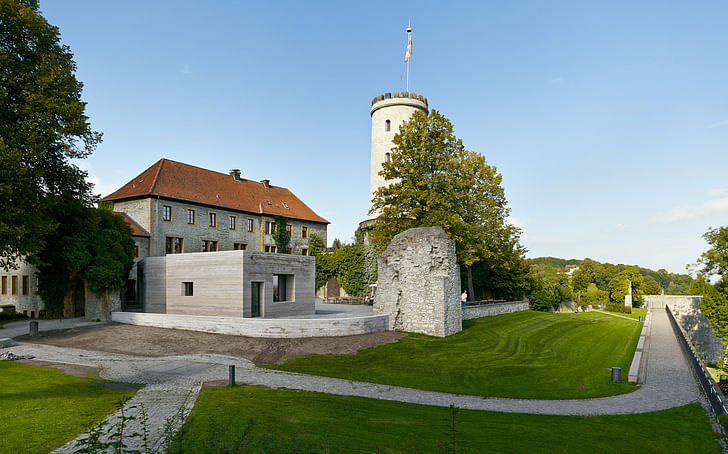
Max Dudler's brutalist beauty falls serenely in line with Sparrenburg Fortress's 800-year history in Bielefeld, Germany.
The original structure, built as a Ravensberg castle around 1250, was expanded into a fortress in the mid 1500s, and then drastically damaged during air raids in World War II. Come 2014, Max Dudler designed the accompanying visitor center to stand separate from the fortress while still sited on the grounds, to give some breathing room between old and new. With such a long history to reference, deciding which era to "match" the center's design to is futile – Dudler chose the brutalist, rammed concrete as a natural contemporary response to the original building's purpose. Other references to castle motifs, like wall textures and recesses, make it a natural adjunct.

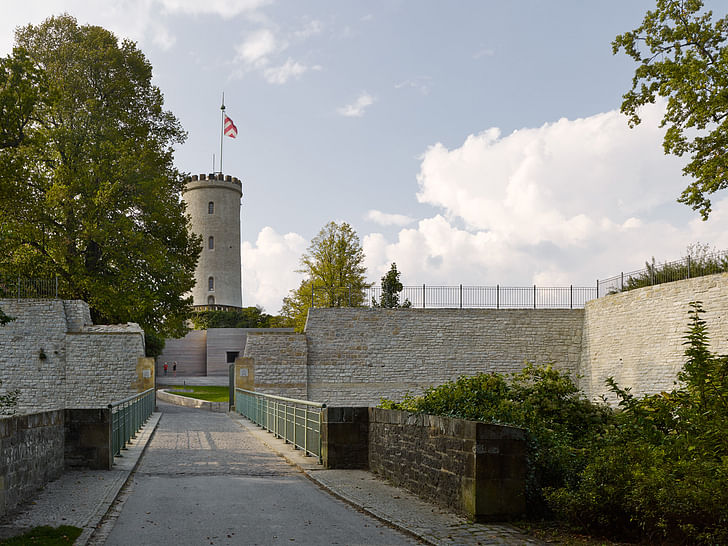
From Max Dudler:
Architect Max Dudler has designed a new visitor centre for the medieval Sparrenburg fortress in Bielefeld. the new Building was opened on 17 septemBer 2014 after a one-year planning and construction period. an info point for the nearby Johannisberg garden and park will follow
at the end of the year, also Based on plans By Max Dudler who won the 2013 competition for the realisation of Both proJects. the Visitor centre has created a new spatial frame for the historical Bailey. the material and expression represent a contemporary update of fortress architecture.

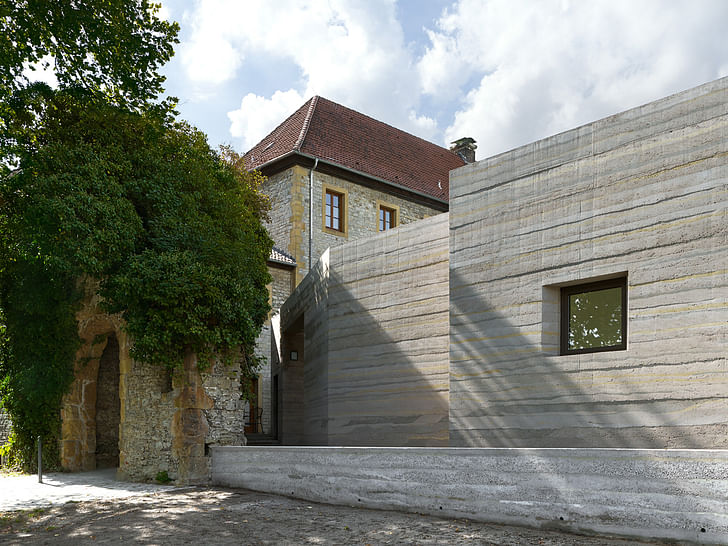

Only a few distinctive elements of the Sparrenburg fortress are left. A 37-metre tower, the main building, an outbuilding and the remains of a gatehouse define the current bailey, which was once the fortress’s outer bailey. The bailey is a very popular spot thanks to the views it offers of the city below.
The new single-storey building was designed as a stand-alone module at the bailey‘s south-eastern end. Together with the gatehouse torso its structure forms a new gateway in which the historic entrance to the fortress can be re-experienced. At the same time the structure has provided a new spatial frame for the bailey. Just like a compass the intervention has clarified the sequence and alignments of the fortress‘s external areas and improved the functional preconditions for its current use as a monument and viewing point.

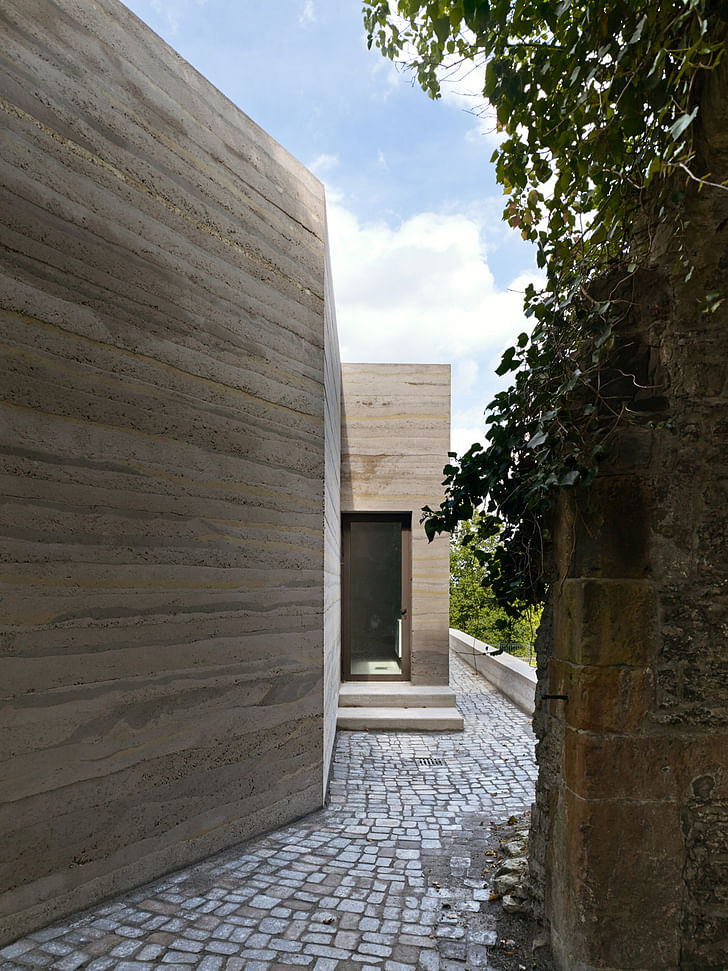
“The design is not a reconstruction of a certain historical state but instead adds a contemporary layer to the place‘s ever-changing history“, says Max Dudler. It is independent of the fortress‘s various construction periods and styles in the sense that it doesn‘t favour the The design is not a reconstruction of a certain historical state but instead adds a contemporary layer to the place's ever-changing history"medieval castle, the subsequent fortress, the 19th century reconstruction or the destructions of World War II over the others. Instead the design translates the existing buildings‘ expression into a language current today. Motifs found on site, such as the recesses in the fortress walls, are echoed and reinterpreted in the new building. The rammed concrete from which the visitor centre‘s structure was cast most notably communicates a tangible sense of this design stance. Like the sediment layers of stones, the colours and textures of the castle ruins have left their mark in its walls: both the limestone of the walls and the sandstone of the jambs. The lively structure of dry concrete and compressed layers also makes the craftsmanship that went into its construction visible.
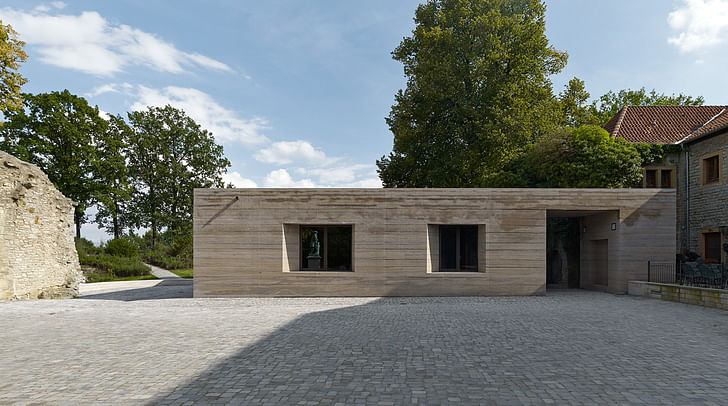
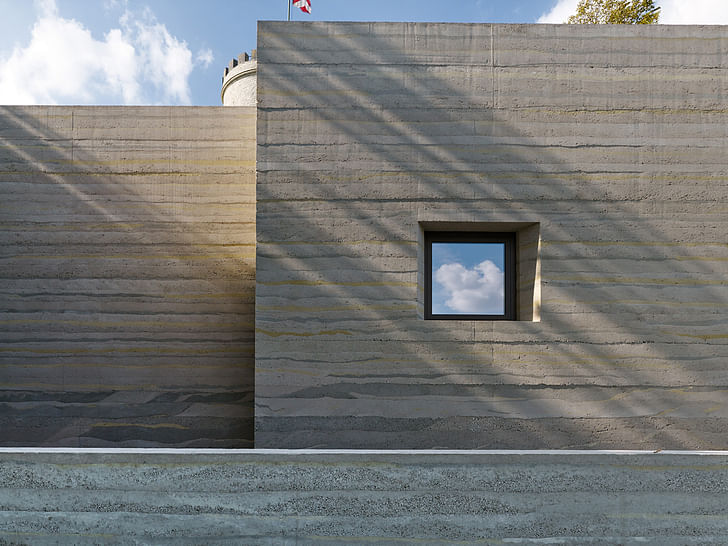
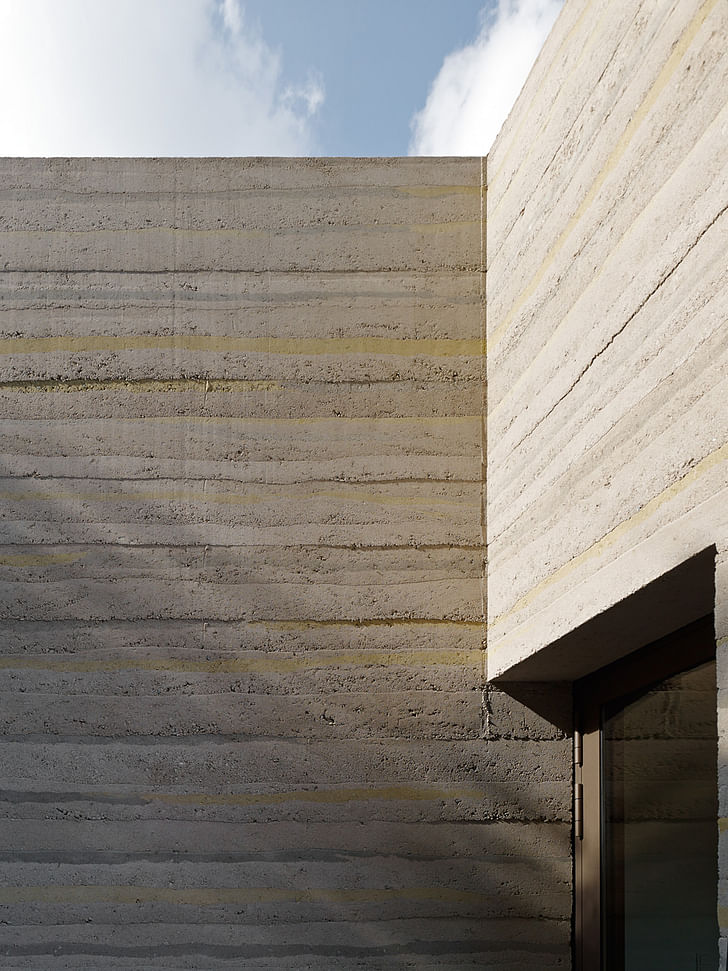
The new building doesn‘t touch the gatehouse fragment anywhere but leaves a gap between old and new. This opens the gateway for two paths to the right and left. One leads to the main building‘s terrace, the other to the staff entrance in the rear. The straight main path also passes the visitor centre‘s main entrance. The newly created ensemble of old and new buildings thus forms a place of arrival, distribution and information. Inside the visitor centre are a museum shop and the ticket area in a room using the same materials as the facade, as well as a kiosk facing the bailey to the north-east.
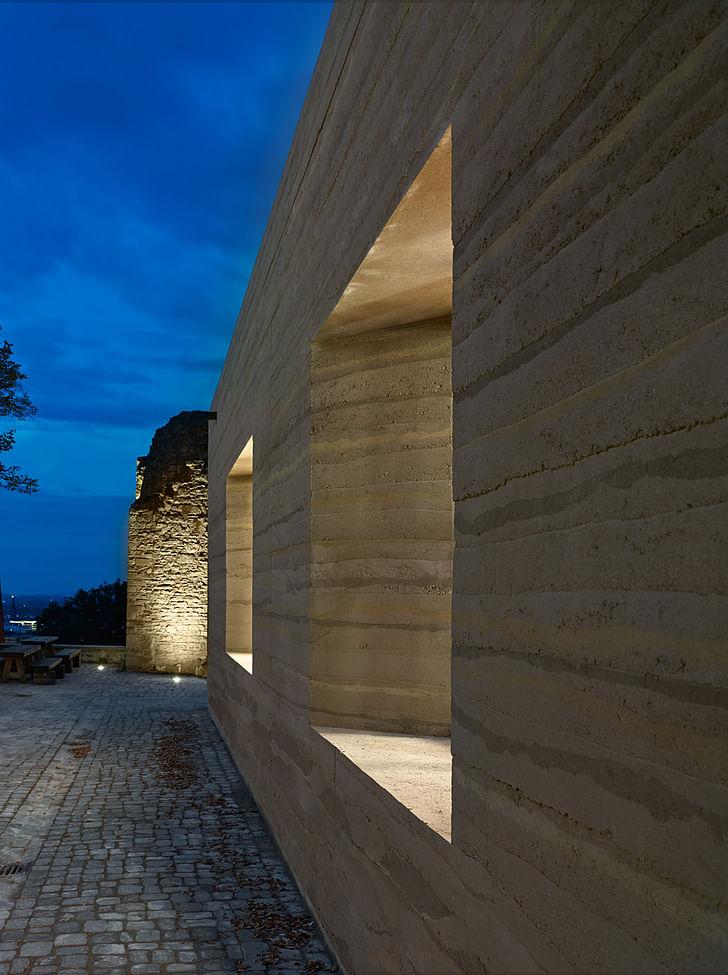
The info point for the Johannisberg garden and park, which is still under-construction, is less than two kilometres north-west of the Sparrenburg fortress. The info point‘s formal design language is closely related to the visitor centre‘s. To create a common identity for park and fortress, both houses will speak the same language in terms of materials, spatial dimensions and facade design.
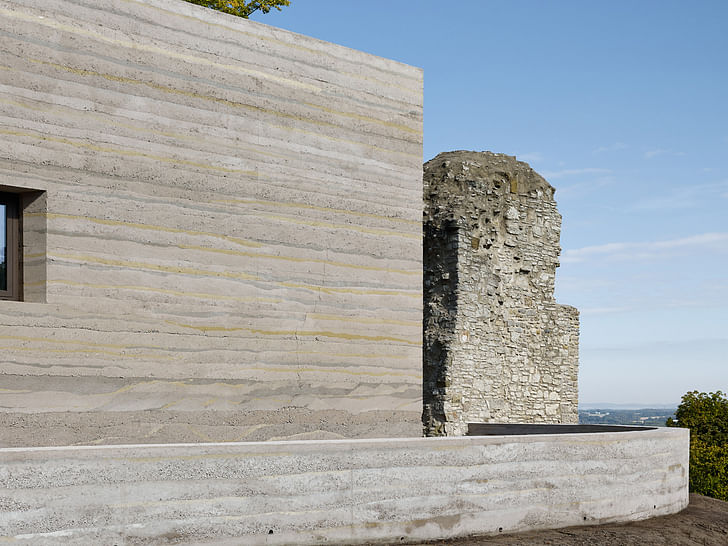
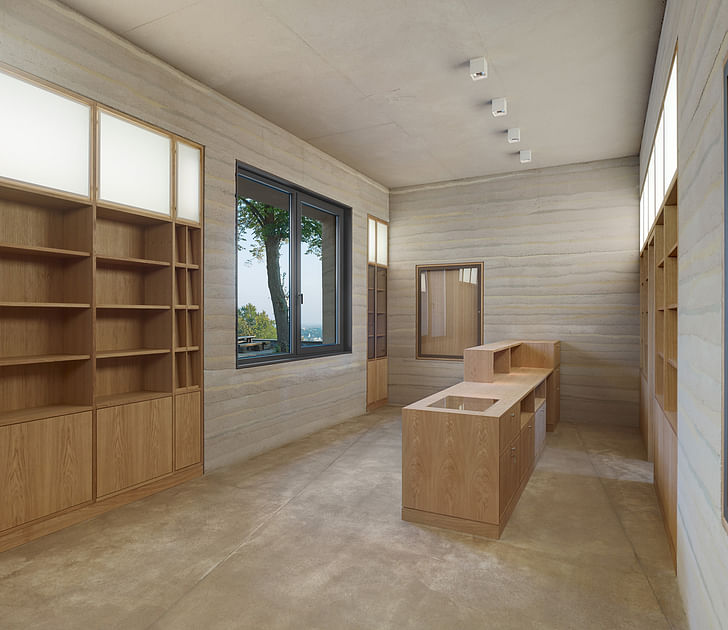

DRAWINGS
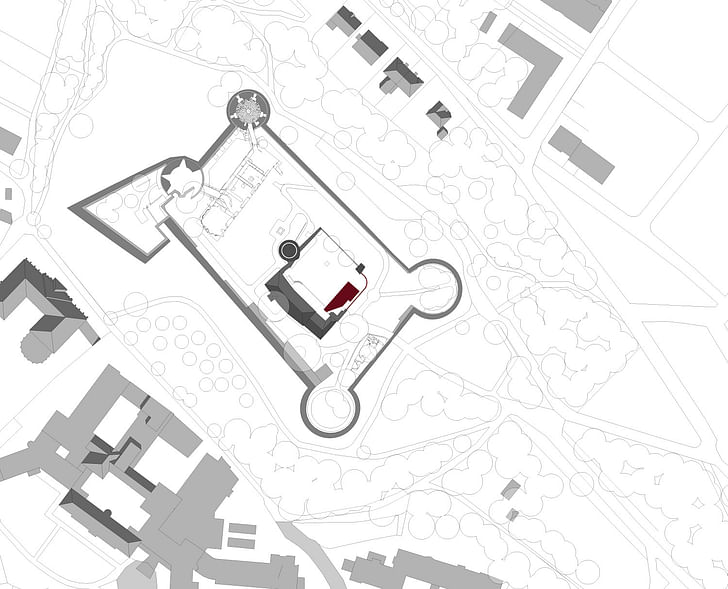



PROJECT DATA:
Project title: Johannisberg park info point
Location: Bielefeld, Germany
Client: City of Bielefeld, represented by Immobilienservicebetrieb (ISB)
Occupant: City of Bielefeld, Environmental Department
Building volume:
Usable floor area: 47.05 m2
Gross floor area: 87.55 m2
Gross building volume: 392.22 m3
Planning period: May 2013 to February 2014
Construction period: June 2014
Architect: Max Dudler, Berlin Frankfurt Zurich
Project manager: Simone Boldrin
Team: Kilian Teckemeier, Thomas Back
Construction supervision: Architektenbüro Stüwe, Bielefeld for Büro Max Dudler
Structural engineers: Prinz & Pott GmbH, Bielefeld
MEP: Martell Ingenieurbüro, Bielefeld
Photographer: Stefan Müller
ShowCase is an on-going feature series on Archinect, presenting exciting new work from designers representing all creative fields and all geographies.
We are always accepting nominations for upcoming ShowCase features - if you would like to suggest a project, please send us a message.
Former Managing Editor and Podcast Co-Producer for Archinect. I write, go to the movies, walk around and listen to the radio. My interests revolve around cognitive urban theory, psycholinguistics and food.Currently freelancing. Be in touch through longhyphen@gmail.com
No Comments
Block this user
Are you sure you want to block this user and hide all related comments throughout the site?
Archinect
This is your first comment on Archinect. Your comment will be visible once approved.